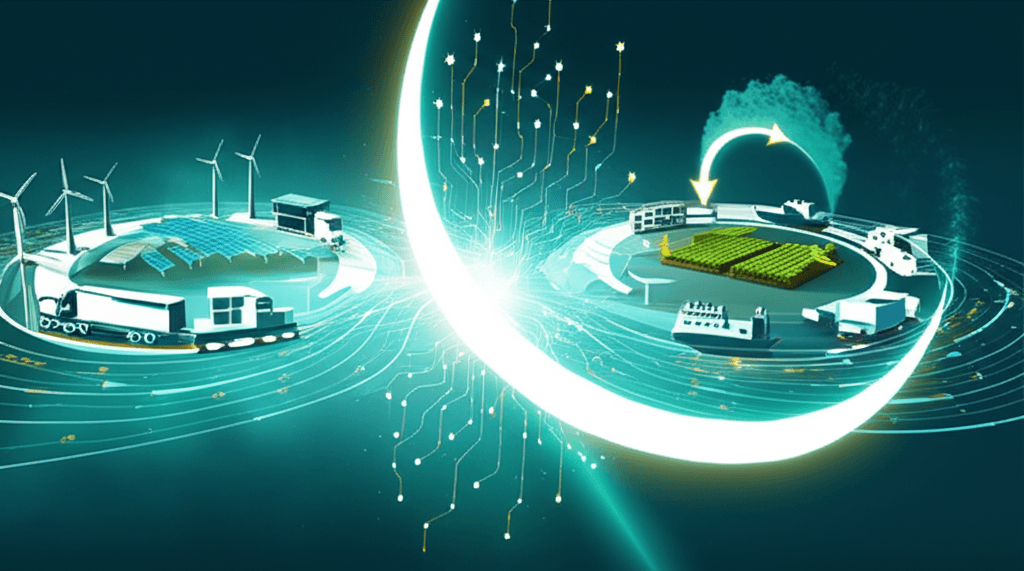AI Poised to Slash Global Emissions by Billions, New Study Finds
A new study shows how strategically applying AI in power, transport, and food systems can cut billions of tons of emissions.
July 2, 2025

A new study suggests that artificial intelligence, a technology often scrutinized for its own growing energy demands, could be a pivotal ally in the global effort to combat climate change. Research from the London School of Economics' Grantham Research Institute on Climate Change and the Environment and the advisory firm Systemiq indicates that strategically applying AI in just three key sectors—power, transport, and food systems—could slash annual global greenhouse gas emissions by 3.2 to 5.4 billion tonnes of carbon dioxide equivalent by 2035.[1][2] This potential reduction far outweighs the emissions generated by the data centers and infrastructure that power AI, presenting a compelling case for its focused deployment in the fight for a net-zero future.[1][2]
The report, published in the journal npj Climate Action, focuses on sectors that together account for approximately half of all global emissions.[1][3] By targeting these high-impact areas, the researchers argue that AI can do more than make incremental improvements; it can help catalyze a broader economic transformation toward sustainability.[1][4] The study identifies several key functions for AI in this transition, including optimizing complex systems, accelerating technological innovation, and informing more effective policy.[1] For instance, in the power sector, AI could enhance the output of solar and wind installations by up to 20% by improving grid management and forecasting.[1][5] This involves using AI to better predict energy supply and demand, which helps to seamlessly integrate intermittent renewable sources into the grid and reduce reliance on fossil fuels.[6][7][8]
In the realm of transportation, another major source of global emissions, AI offers significant potential for decarbonization. AI algorithms can optimize logistics and freight operations by analyzing vast datasets that include real-time traffic, weather, and delivery schedules to determine the most fuel-efficient routes.[9][10][11] This not only cuts down on fuel consumption but also reduces the number of unnecessary journeys by improving how efficiently vehicles are loaded and utilized.[12] Furthermore, AI can encourage a shift from road and air transport to more carbon-efficient modes like rail and sea by identifying cost-effective and time-sensitive opportunities for the switch.[12] The development of autonomous vehicles, guided by AI, also promises smoother driving patterns and optimized speeds, which can lead to significant fuel savings and reduced emissions.[9][7]
The food and agriculture sector, a critical component of the global emissions puzzle, also stands to benefit greatly from AI applications. Precision agriculture, powered by AI, uses data from sensors, drones, and satellites to optimize the use of water, fertilizers, and pesticides, thereby reducing the greenhouse gases associated with their production and application.[13][14][15] AI can also monitor crop and soil health, enabling early detection of diseases and pests and allowing for targeted interventions instead of broad-scale chemical treatments.[13][16] In livestock farming, a major source of methane, AI can optimize feed and monitor animal health to reduce emissions.[13] The study also points to AI's potential to accelerate the development and adoption of alternative proteins by optimizing fermentation processes, which could lessen the environmental impact of traditional meat and dairy production.[17][15]
Despite the promising potential of AI to drive down emissions, the study and other experts caution that these benefits are not guaranteed. The significant and rapidly growing energy consumption of AI models and data centers remains a serious concern.[18][19] Training a single large AI model can emit hundreds of tons of carbon dioxide, equivalent to the lifetime emissions of several cars.[20][21] Therefore, realizing the net positive climate impact of AI requires intentional and coordinated action from governments, technology companies, and energy providers.[1][3] This includes developing strong governance frameworks and ensuring equitable access to AI capabilities, particularly for developing nations that are often most vulnerable to climate change but have the least access to advanced technology.[3][22][23] The research underscores that without focused public policy and global cooperation, the commercial incentives may not align with deploying AI for the greatest social and environmental benefit.[3]
Sources
[5]
[6]
[7]
[10]
[11]
[12]
[13]
[14]
[15]
[17]
[18]
[19]
[20]
[22]
[23]